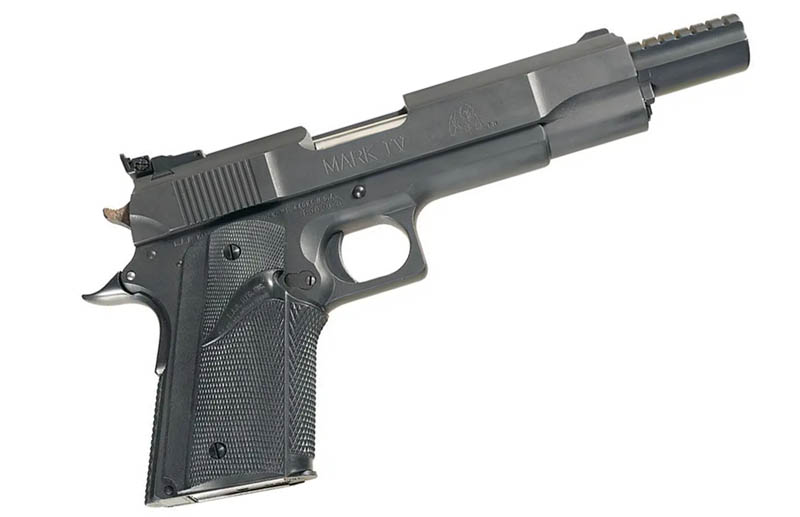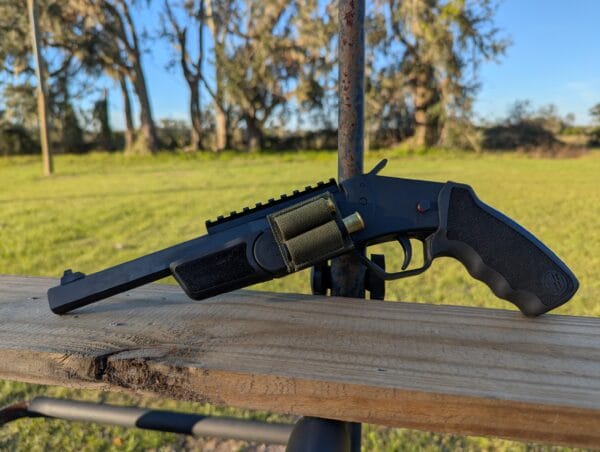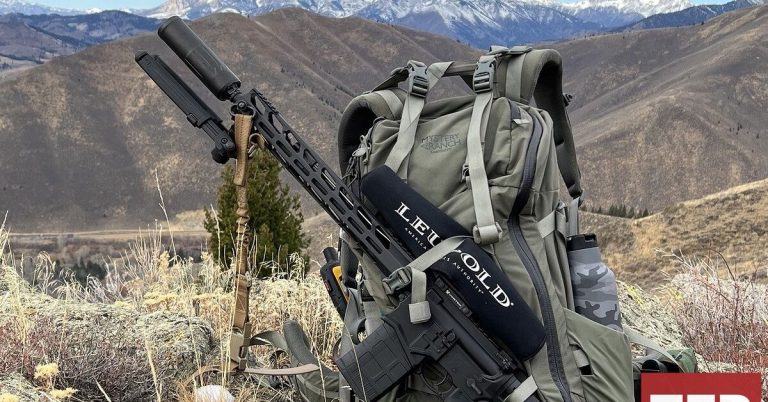Looking for a hand cannon but don’t like wheelguns? Here are your (limited) options when it comes to buying a .44 Magnum pistol.
Over the years, there have been many attempts to create a semi-auto handgun chambered for a cartridge with the power of .44 Magnum. Of those, only two were true auto-loading .44 Magnum pistols, and only one of those is still in production today. The rest were either commercial failures or chambered for the .44 AMP cartridge. Spoiler, the .44 AMP guns weren’t exactly commercial successes either.
There are several reasons why they don’t necessarily work commercially (or mechanically), and in truth, they are almost comically impractical…but impracticality hasn’t stopped anyone before and it sure isn’t going to now!
So, let’s talk about semi-auto .44 Magnum pistols, what’s actually available today and why you’d want to even bother.
Common .44 Magnum Pistol Issues
Strictly speaking, there are two semi-automatic .44 Magnum pistols: the LAR Grizzly and the Magnum Research Desert Eagle. There are a few additional pistols that chamber .44 AMP (Auto Magnum Pistol), but .44 AMP is not .44 Magnum. It’s a rimless cartridge, and .44 Magnum is rimmed.
And therein layeth the biggest mechanical issue with the concept.
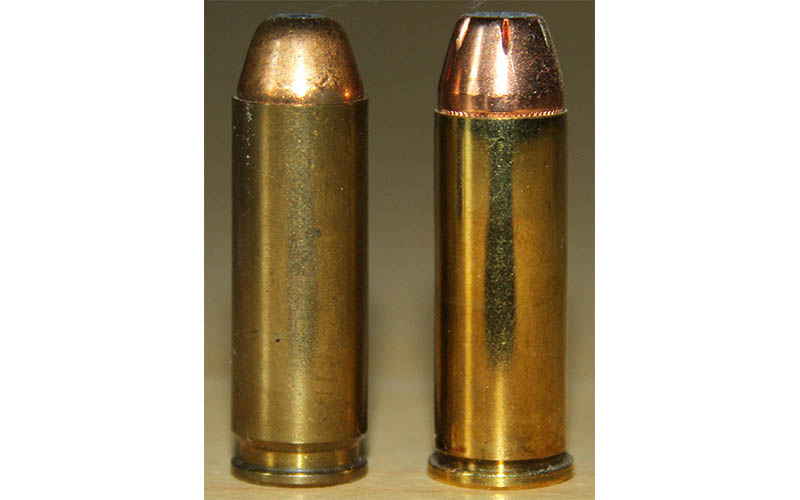
Rimmed cartridges create a serious challenge when it comes to feed geometry in self-loading firearms. Rimless cartridges stack neatly on top or staggered against each other, but rimmed cartridges can’t because of their rim.
That matters, since the top cartridge in the magazine needs to feed straight up, get stripped by the bolt/slide and feed into the chamber. If the cartridge is inherently prone to nosing down, which a rimmed cartridge will do in a box magazine, that’s going to cause reliability issues.
Semi-rimmed cartridges, such as .38 Super, aren’t as much of a challenge (.38 Super magazines have existed for 1911s since 1929), but fully-rimmed cartridges like .44 Magnum are. As a result, there are few semi-auto pistols or rifles designed for a rimmed case of any kind.
Then you have the issue of all that pressure and recoil energy. To create a miniature operating system that can tolerate the forces involved, generally, there needs to be a significant investment in R&D as well as production. This is partly why .44 Magnum pistols are notoriously expensive.
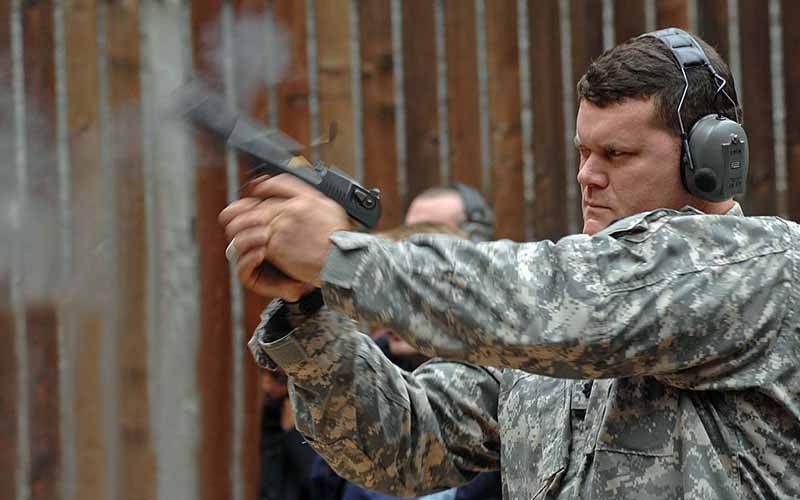
To give you an idea, the Desert Eagle .44 Magnum had an MSRP of $699 in 1986, but that’s about $1,962 today after adjusting for inflation.
In short, yes, it’s possible to overcome the inherent problems of making a reliable .44 Magnum pistol, but it’s going to be expensive. There’s just no easy (and therefore cheap) solution for getting around the issues that are inherent to the cartridge.
Is A .44 Magnum Pistol Worth It?
There are three primary reasons for owning a .44 Magnum handgun. The first is for handgun hunting, given that .44 Magnum is an excellent game cartridge at reasonable ranges. The second is as a woods defense pistol in case of predators.
Third, of course, is just because you want one, and that is far and away the most common reason why anyone buys one.
The truth is that a .44 Magnum handgun for any kind of serious application should be a quality revolver. It’s what the cartridge was designed for, and frankly, we know by now that large-frame magnums work. You spend less and get a gun that you know will run.
Unlike pistols that can be practically used for defense against humans, capacity is a low-priority concern when it comes to .44 Magnum handguns. Whether hunting game or defending against a charging grizzly, if you can’t solve the issue with six shots, odds are you aren’t going to do it with eight or nine either.
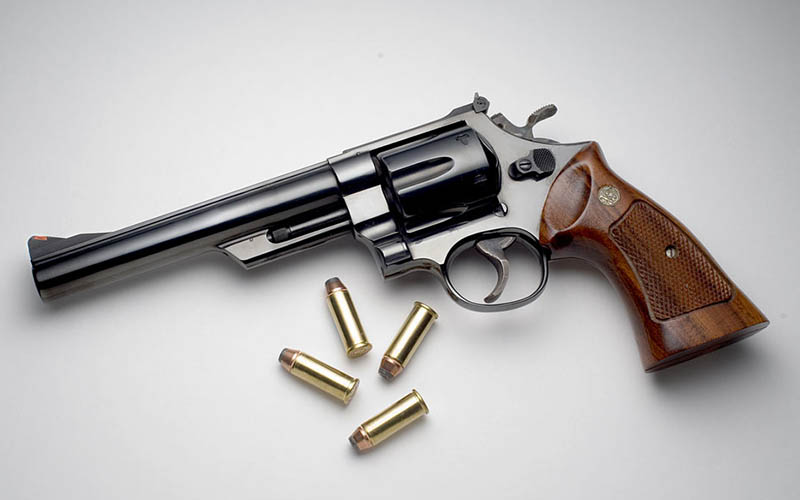
The lower potential reliability and greater cost of semi-auto .44 Magnum pistols simply don’t outweigh the benefit of a couple extra rounds. This is why you’re much more likely to see a seasoned woodsman carrying something like a Model 29 than a Desert Eagle, and you should probably follow suit and stick to revolvers if you plan on using the cartridge seriously.
That said, if you just want an automatic .44 hand cannon for the hell of it, let’s go over your limited options.
A .44 Magnum Pistol Buyer’s Guide…Sort Of:
As mentioned, there are only two true semi-auto .44 Magnum pistols, but we’re going to go over both of them plus three honorable mentions that almost fit the bill.
Magnum Research Desert Eagle

The Desert Eagle is the only extant true semi-automatic .44 Magnum pistol, having been in continuous production since 1983. It’s a comically large single-action-only pistol with a slide-mounted safety, a short-stroke gas piston system (kind of like an upside-down AK) and a rotating bolt.
Desert Eagles are known for sometimes being finicky, with ammunition sensitivity and magazines (8-round capacity) being the usual suspects. However, owners generally report that once you get one dialed in (or get lucky), they tend to be fairly reliable.
Multiple models with varying features, finishes and barrel lengths are available. MSRP ranges from just under $2,000 to around $2,500, but street prices are closer to $1,500 on the low end.
LAR Grizzly Mark IV
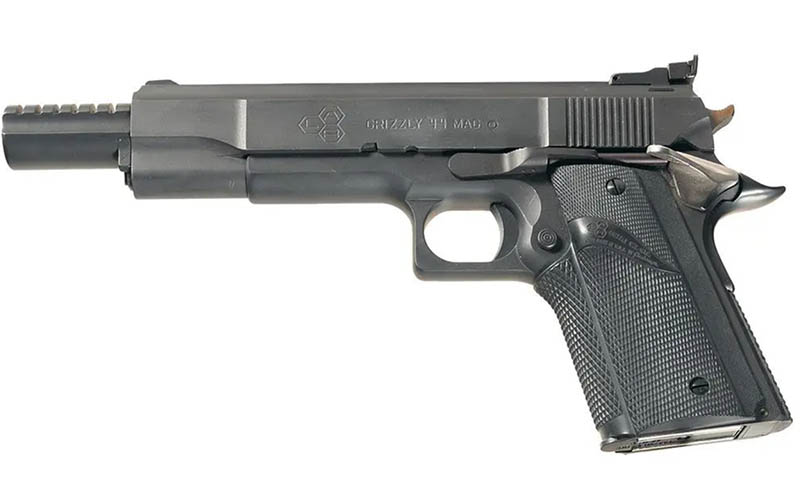
The only other commercially successful (up to a point; the company went out of business over 20 years ago) .44 Magnum semi-auto was the LAR Grizzly, manufactured from 1983 to 1999. It was offered in several calibers, including .44 Magnum.
The LAR Grizzly is essentially a 1911 with an elongated mag well, and in fact shares several parts with the standard 1911 Government model. The Grizzly was hand-fitted and known for having exceptionally good accuracy.
The standard barrel length was 5.4 inches, but 6.5-, 8- and 10-inch barrels were offered as well (though there were no long-slide models). The 8- and 10-inch guns were popular for silhouette shooting and handgun hunting. All .44 Mag. models had a 7-round magazine.
The most common chambering was .45 Winchester Magnum, but the Mark IV model was offered in .44 Magnum so that would be the one you’re looking for. Good luck finding one…and if you do, expect to pay $3,000 to $5,000 as that’s about what they command on the used market today.
Honorable Mention: .44 AutoMag

The .44 AutoMag is not technically a .44 Magnum pistol, as it chambered .44 AMP (essentially a .44-caliber rimless cartridge loaded to .44 Magnum velocities) to abrogate the feeding issues. The AutoMag, made famous by the Dirty Harry sequel Sudden Impact (the last watchable film in the series and the source of “Go ahead…make my day”), was a commercial disaster and bankrupted several companies in the process.
The .44 AutoMag featured a single-action firing system with a rotating bolt. Only a few thousand were manufactured over a production run of 10 years, so used examples are not cheap.
However, there’s some good news. The rights to the AutoMag pistol were purchased a few years ago, and new production has commenced as the Auto Mag Raven. It’s currently offered with either a 6.5- or 8-inch barrel and MSRP starts at $3,995.
Honorable Mention: Wildey Magnum
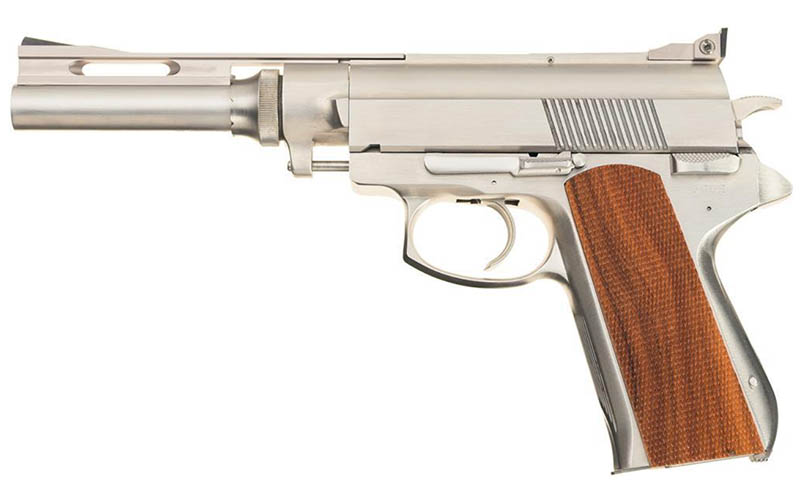
The Wildey Magnum was another attempt at the magnum semi-auto, offered in multiple calibers including .44 AMP. While not a true .44 Magnum pistol, it was still an innovative design and likewise entered pop culture in Death Wish 3 along with some other films.
The Wildey, like the Desert Eagle, uses a short-stroke piston system with a rotating bolt, but unlike the Deagle its gas system is adjustable. Interestingly, it is the lone DA/SA pistol among the magnum semi-autos, and therefore also the only one to have a frame-mounted decocker.
The Wildey pistols had a fairly long production run, lasting from 1983 to 2011, but the rights to the gun and name were purchased in 2016 and new production has resumed under the USA Firearms Corp brand. You can order a Wildey Survivor with an 8-, 10- or 12-inch barrel, and MSRP starts at $2,750.
Honorable Mention: Mateba Model 6 Unica
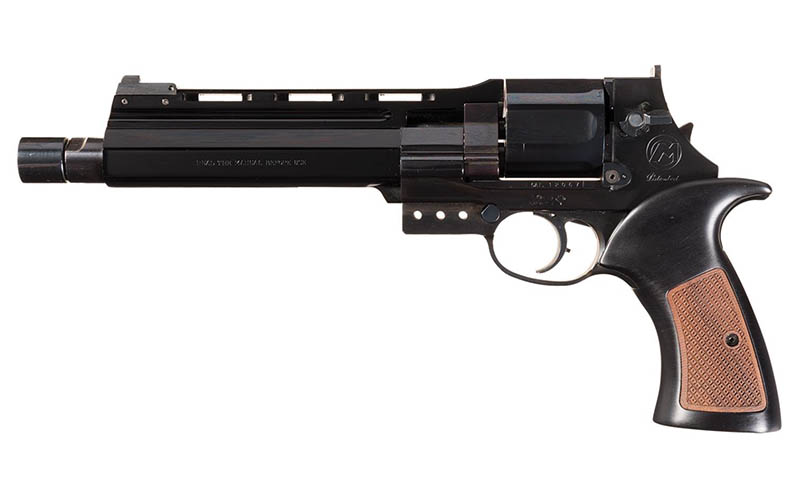
The Mateba is not technically a semi-auto, but rather an automatic (self-cocking) revolver. Like the Webley-Fosbery pistol, a slide mechanism cocks the hammer to single-action upon recoil and as it returns to battery it rotates the cylinder.
The pistol was the brainchild of Emilio Ghisoni, an innovative gun designer who was also responsible for the Chiappa Rhino. Like the Rhino, the Mateba’s barrel is mounted at the bottom of the frame, putting recoil in line with the hand.
The .44 Magnum model was offered with a 5-, 6- or 8 ?-inch barrel, and in multiple trim levels. Mateba revolvers are rare and incredibly unique, infrequently coming up for sale and commanding a high price (expect to pay $4,000 or more) when they do.
More On Big-Bore Handguns:

Next Step: Get your FREE Printable Target Pack
Enhance your shooting precision with our 62 MOA Targets, perfect for rifles and handguns. Crafted in collaboration with Storm Tactical for accuracy and versatility.
Subscribe to the Gun Digest email newsletter and get your downloadable target pack sent straight to your inbox. Stay updated with the latest firearms info in the industry.







